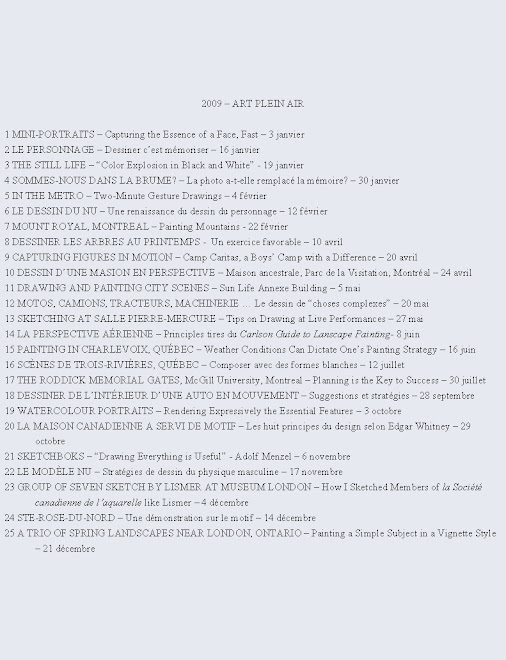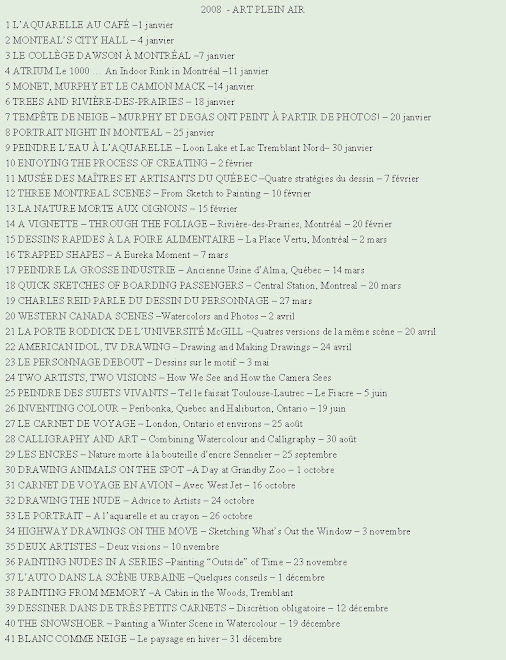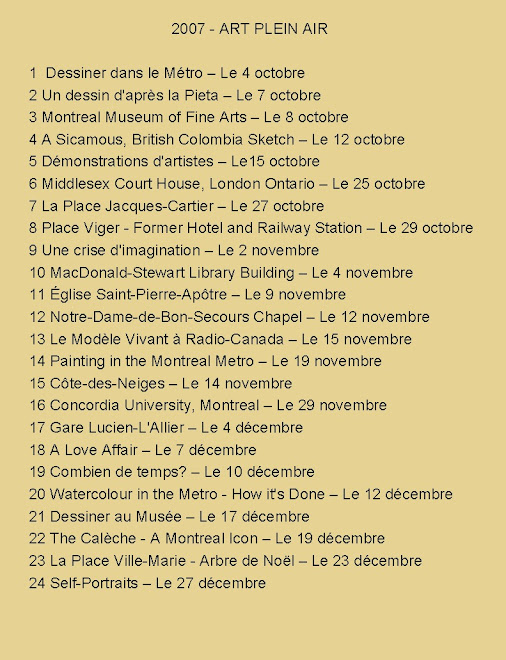 Monday is portrait night here. About four years ago my friend Yvon decided to meet Monday nights with a few artist friends and draw each other’s portrait. After we had drawn each other a few times on subsequent evenings we began to invite a non-artist friend or a family member to pose. The rest is history. Now, “Portrait Night” has become so popular that we have a waiting list of artists waiting to “sit in” when one is absent.
Monday is portrait night here. About four years ago my friend Yvon decided to meet Monday nights with a few artist friends and draw each other’s portrait. After we had drawn each other a few times on subsequent evenings we began to invite a non-artist friend or a family member to pose. The rest is history. Now, “Portrait Night” has become so popular that we have a waiting list of artists waiting to “sit in” when one is absent.
We meet between 7 pm and 9 pm. The invited guest sits for a 25 minute pose. A spot light illuminates the sitter from left to right or right to left. After about twelve minutes the sitter is asked if a break is needed. If not, we continue drawing or painting. There is a coffee break between the second and third poses. In order to give everyone a chance to draw the guest from different angles we switch chairs for the three poses. The model can change sitting position but is asked to face the same way for all three poses. At the end of the evening the guest chooses a drawing or painting from each. This is our way of thanking the guest. All this is free, for the invited sitter as well as for the
 artists …which seems to be rare these days, at least for the last group mentioned …
artists …which seems to be rare these days, at least for the last group mentioned …“But, drawing the portrait … is difficult! Ah yes? What difference is there between measuring the length, the curve or the angle of a pot, a pear, a barn door or a roof and measuring the curve of an eye, the angle of the nose or the distance between the base of the nose and the upper lip?” says my friend, Yvon. He continues “and then there are numerous books that can help. Isn’t it Degas who used to say: draw, draw, draw. One could parody him by saying: measure, measure, measure.” (Adapted from an article by Yvon Masse in the magazine l’Aquarelliste)
 If you look at the drawings and paintings illustrated here, all done on portrait night, you will notice that some look unfinished. Yet the resemblance of the model is there regardless of the features not drawn. Less is more, sometimes. Also, probably because none of the portraits are for sale and that the sitter has no say about the outcome, the artists are free to experiment with diverse materials and styles. I feel that this freedom permits us to “look anew at each subject and each situation in and of itself” (B. Haak in Rembrandt Drawings, The Overlook Press). Let me conclude with the entire quote from B. Haak’s book.
If you look at the drawings and paintings illustrated here, all done on portrait night, you will notice that some look unfinished. Yet the resemblance of the model is there regardless of the features not drawn. Less is more, sometimes. Also, probably because none of the portraits are for sale and that the sitter has no say about the outcome, the artists are free to experiment with diverse materials and styles. I feel that this freedom permits us to “look anew at each subject and each situation in and of itself” (B. Haak in Rembrandt Drawings, The Overlook Press). Let me conclude with the entire quote from B. Haak’s book.
“The greatness of Rembrandt as draftsman lies in the combination of a number of qualities and certainly also in his determination to look anew at each subject and each situation in and of itself. He never repeated himself or lapsed into affectation. Unlike his paintings and his etchings, his drawings were hardly ever for display or sale. Therefore they give the most intimate view of his artistic mastery.”
Gather a group together and try “Portrait Night” in your area. It might just become addictive, as it has become for us!

Raynald Murphy sca









Aucun commentaire:
Enregistrer un commentaire